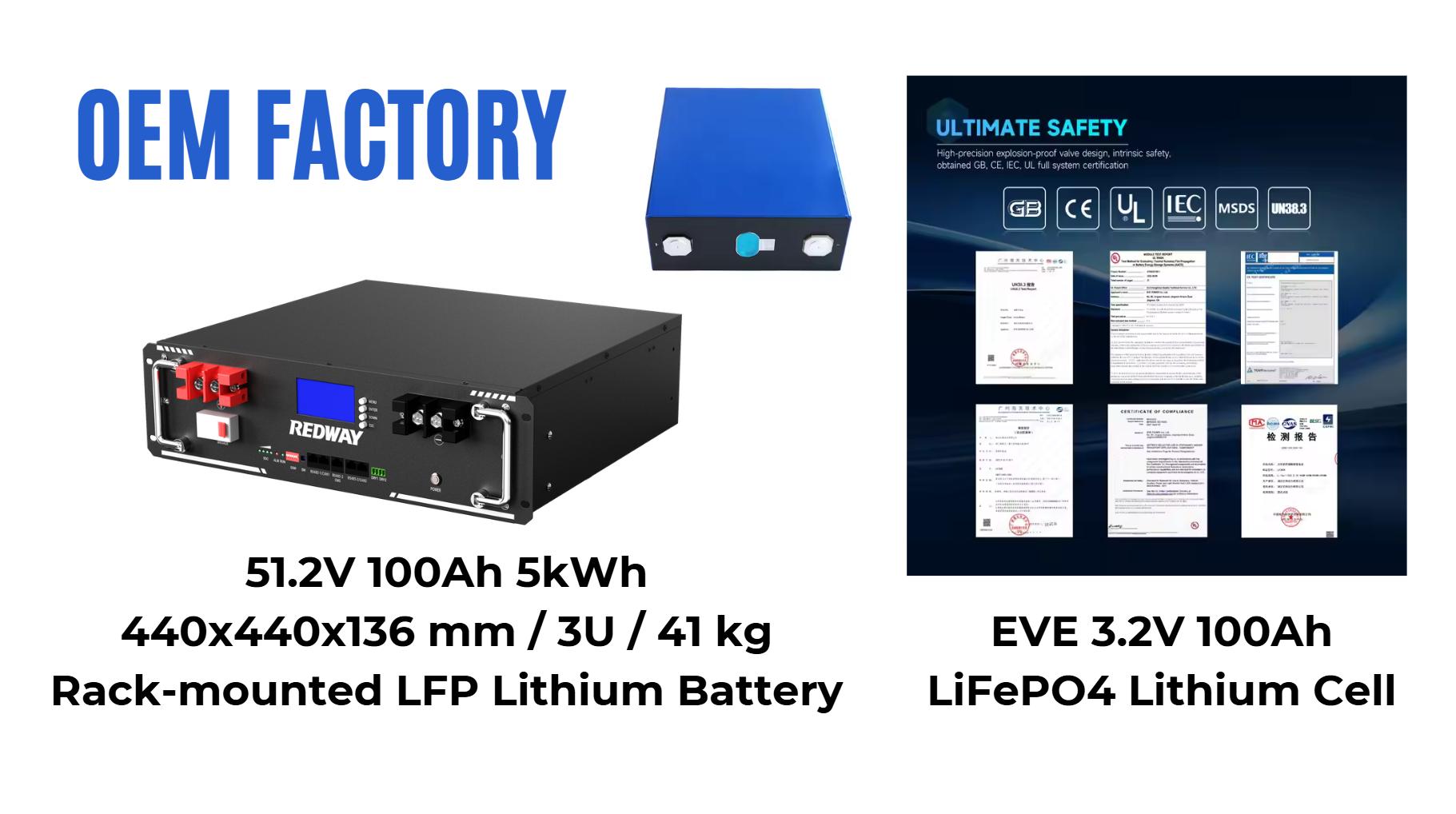LiFePO4 (Lithium Iron Phosphate) rack mounted batteries have emerged as a preferred solution for various applications, particularly in industries requiring robust energy storage systems. This comprehensive guide delves into the features, benefits, installation, maintenance, and applications of LiFePO4 rack mounted batteries, emphasizing their significance in today’s energy landscape.
LiFePO4 rack-mounted batteries are efficient energy storage solutions used in data centers and industries. They provide high energy density, long cycle life, improved safety features, and modular designs for easy scalability—key factors to consider when choosing energy storage options!
1. What Are LiFePO4 Rack Mounted Batteries?
LiFePO4 rack mounted batteries are a type of lithium-ion battery designed specifically for easy installation in standardized racks. These batteries utilize lithium iron phosphate as the cathode material, offering several advantages over other lithium-ion batteries. The rack-mounted format allows for efficient space utilization in data centers, telecommunications, and renewable energy systems.
Wholesale lithium golf cart batteries with 10-year life? Check here.
2. Key Features of LiFePO4 Rack Mounted Batteries
2.1. High Energy Density
LiFePO4 batteries boast a high energy density, meaning they can store a large amount of energy in a compact size. This feature is essential for applications where space is a premium, allowing for more energy storage without occupying excessive physical space.
2.2. Long Cycle Life
One of the most significant advantages of LiFePO4 batteries is their long cycle life. Typically, these batteries can endure over 2000 charge cycles, making them ideal for continuous operation environments where frequent cycling is required. This longevity reduces the need for replacements, ultimately lowering operational costs.
Want OEM lithium forklift batteries at wholesale prices? Check here.
2.3. Enhanced Safety
LiFePO4 batteries are known for their thermal stability and safety features. They are less prone to overheating and thermal runaway compared to other lithium-ion batteries, making them a safer option for critical applications. This safety profile is crucial in preventing accidents and ensuring reliable performance.
2.4. Environmentally Friendly
LiFePO4 batteries are made from non-toxic materials, which significantly reduces their environmental impact. This eco-friendliness makes them a popular choice for organizations committed to sustainability and reducing their carbon footprint.
3. Benefits of Using LiFePO4 Rack Mounted Batteries
3.1. Space Efficiency
The rack-mounted design optimizes space, allowing for straightforward integration into existing systems. This feature is particularly beneficial for facilities like data centers that require dense energy storage solutions.
3.2. Scalability
LiFePO4 rack mounted batteries can be easily scaled to meet varying energy needs. This flexibility allows businesses to expand their energy storage capacity as required without significant infrastructure changes.
3.3. Cost-Effectiveness
While the initial investment in LiFePO4 batteries may be higher than traditional lead-acid batteries, the long-term savings from reduced maintenance, longer lifespan, and efficiency make them a cost-effective solution over time.
4. Installation of LiFePO4 Rack Mounted Batteries
4.1. Pre-Installation Considerations
Before installation, it’s essential to assess the site conditions, including temperature, ventilation, and accessibility. Ensuring the environment meets the manufacturer’s specifications is crucial for optimal battery performance.
4.2. Installation Steps
- Select the Appropriate Rack: Choose a compatible rack designed for LiFePO4 batteries.
- Position the Rack: Install the rack in a suitable location, ensuring adequate ventilation.
- Connect the Batteries: Follow the manufacturer’s guidelines for connecting the batteries in series or parallel, depending on the desired voltage and capacity.
- Secure Connections: Ensure all electrical connections are tight and secure to prevent any power loss.
- Install Monitoring Systems: If available, integrate battery management systems (BMS) for real-time monitoring of battery performance.
5. Maintenance of LiFePO4 Rack Mounted Batteries
5.1. Regular Inspections
Conduct routine inspections to check for any signs of wear, corrosion, or loose connections. Regular monitoring helps identify potential issues before they escalate.
5.2. Cleaning
Keep the battery terminals and surrounding areas clean and free from dust and debris. This practice helps maintain optimal performance and safety.
5.3. Firmware Updates
For batteries equipped with smart technology, ensure that firmware is regularly updated to benefit from the latest enhancements and safety features.
6. Applications of LiFePO4 Rack Mounted Batteries
6.1. Data Centers
LiFePO4 rack mounted batteries are extensively used in data centers for uninterruptible power supply (UPS) systems, ensuring continuous operation during power outages.
6.2. Telecommunications
These batteries provide reliable backup power for telecommunications equipment, maintaining connectivity during outages.
6.3. Renewable Energy Systems
LiFePO4 batteries play a crucial role in solar and wind energy storage, allowing for efficient energy capture and use during periods of low generation.
6.4. Electric Vehicles
While primarily used in stationary applications, LiFePO4 technology is also applied in electric vehicles, enhancing performance and safety.
Conclusion
LiFePO4 rack mounted batteries represent a significant advancement in energy storage technology, offering numerous benefits including high energy density, long cycle life, and enhanced safety. Their versatility makes them suitable for a wide range of applications, from data centers to renewable energy systems. By understanding their features and advantages, organizations can make informed decisions to optimize their energy management strategies.






